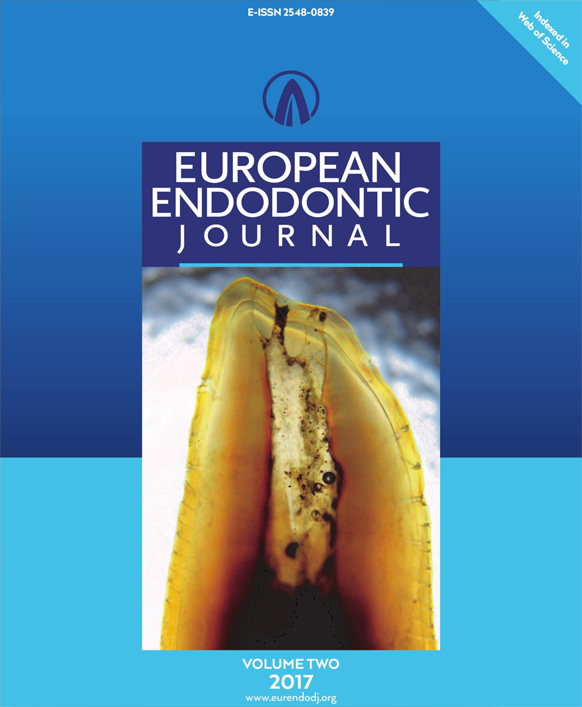
European Endodontic Journal
Yazarlar: Lara Friedlander, Trudy Milne, Haizal Mohd Hussaini, Benedict Seo, Alison Rich, Ahmad Al-Hassin
Konular:-
DOI:10.14744/eej.2019.26349
Anahtar Kelimeler: Angiogenesis,Angiopoietins,Dental pulp,Immunohistochemistry,Reversible pulpitis,Tie2,VEGF,Vital pulp therapy
Özet: This study aimed to examine the protein and gene expression of vascular endothelial growth factor (VEGF) and angiopoietins-1 and 2 in tissue from healthy and inflamed dental pulps. Methods: Permanent teeth with pulps diagnosed as healthy or reversible pulpitis were used for immunohistochemistry (IHC) and gene expression experiments. For IHC, a whole pulp tissue was excavated from the pulp chamber, and it was formalin-fixed and processed for routine IHC with angiogenic markers anti-VEGF, anti-Ang1, and anti-Ang2. Staining was visualized with diaminobenzidine (DAB), and examined using light microscopy. The distribution of markers in healthy and inflamed pulps was qualitatively and quantitatively analyzed. Real-time quantitative polymerase chain reaction (RT qPCR) was used to ascertain the gene expression levels of ANGPT1, ANGPT2, and TEK in the presence of inflammation. Statistical analysis was performed using the Mann–Whitney test with the statistical significance level set at 0.05. Results: There was increased protein and mRNA expression of VEGF and Ang-1 markers in inflamed pulp samples as compared with that in the healthy pulp tissue. IHC demonstrated intense expression of the VEGF protein on endothelial cells (EC) and some non-ECs, and there was significantly more staining on ECs associated with inflamed tissue (P<0.001). Ang-1 and Ang-2 were significantly expressed on ECs and non-ECs (P<0.05). RT qPCR did not show significant differences in gene expression between healthy and inflamed samples although similar trends were observed to IHC. Conclusion: The presence of Ang-1, Ang-2, VEGF, and TEK gene in healthy and mildly inflamed pulp tissue associated with reversible pulpitis indicates that these angiogenic factors may participate in physiological and pathological angiogenesis and healing. The inflammatory process may regulate Ang-1/Ang2/Tie2 signaling; and together with VEGF, these growth factors have an important role in modulating pulp angiogenesis.